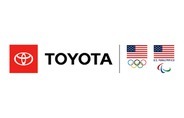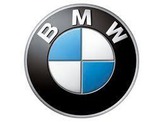Best Car Brands
If you want to make sure you buy a car with the right technological, safety and space-saving features, use our guide to research the best car brand for you. Each company has multiple models that can be customized in dozens of ways. We explain how to find a vehicle that fits your lifestyle and budget.
- Our recommendations are based on what reviewers say.
- 4,337,775 reviews on ConsumerAffairs are verified.
- We require contact information to ensure our reviewers are real.
- We use intelligent software that helps us maintain the integrity of reviews.
- Our moderators read all reviews to verify quality and helpfulness.
Compare Reviews for Top Car Brands | ||||||
|---|---|---|---|---|---|---|
Compare
| The first MINI was produced in 1959 to fill the need for a fuel-efficient car. In 1999, a group of automotive journalists voted the MINI the “European Car of the Century.” MINI now makes several models, including a convertible. |  | Get Pricing on Carvana | |||
Isuzu was founded in 1934 and partnered with GM in 1971. Today, Isuzu produces and sells commercial trucks and diesel engines globally. It also produces pickup trucks and SUVs but doesn’t sell them in the United States. | Chat with a ConsumerAffairs decision guide Live agent | |||||
Manufacturer and seller of all-electric low-speed vehicles. All vehicles are street-legal and can reach up to 25 mph. Premium upgrades available. Customers can build their own vehicle online. |  | Chat with a ConsumerAffairs decision guide Live agent | ||||
Suzuki produced its first car in 1955 and expanded to manufacture other vehicles. GM purchased shares in 1981, eventually owning 20 percent of Suzuki. GM divested in 2008. In 2012, Suzuki ceased operations in the United States. |  | Chat with a ConsumerAffairs decision guide Live agent | ||||
Founded in 2003, Tesla set out to produce electric cars offering the same power and range as gasoline-powered vehicles. They manufacture sedans and crossovers that run on only electricity with cutting-edge autopilot technology. | Chat with a ConsumerAffairs decision guide Live agent | |||||
Chevrolet was founded in 1911 by a racecar driver and auto manufacturer. It’s a division of GM and is the company’s best-selling brand, producing a wide variety of cars, trucks and SUVs. The brand often wins awards for its value. |  | Chat with a ConsumerAffairs decision guide Live agent | ||||
Compare
| Toyota, established in 1933, manufactures coupes, sedans, trucks, SUVs, crossovers, vans and sports cars. The number of models and options mean the brand can offer prices to meet most budgets. |  | Get Pricing on Carvana | |||
Now a division of GM, Buick was founded in 1903. The brand originally catered to older professionals but has recently added features to make it appealing to younger drivers too. Buick focuses on luxury sedans and crossovers. |  | Chat with a ConsumerAffairs decision guide Live agent | ||||
Compare
| Headquartered in South Korea, Hyundai was founded in 1967. The company is one of the world’s largest auto manufacturers with dealerships in nearly 200 countries. Hyundai makes sedans, coupes, SUVs, crossovers and hybrids. |  | Get Pricing on Carvana | |||
GMC was founded in 1902 and purchased by General Motors a few years later. It became GMC Truck in 1912. Today, the company manufactures crossovers, SUVs and trucks with a variety of features. |  | Chat with a ConsumerAffairs decision guide Live agent | ||||
What should you consider when looking for a car?
Price
Price is one of the most important factors when you’re planning to buy a new automobile. Make sure to set and stick to a realistic budget.
- Financing: Most car dealerships offer financing, and they often advertise very interest low rates, but not everyone will qualify for those rates. Compare the financing the dealership offers you to financing at a local bank or credit union to ensure you get the best deal. Leasing or purchasing are options to consider.
- Certified pre-owned: Consider buying a certified pre-owned model. These vehicles have passed thorough inspections and usually come with a warranty. They will save you money upfront, and you’ll also lose less on depreciation. However, a certified pre-owned vehicle means you do not get to build the vehicle to your exact specifications.
- Base models: Consider what features you truly need and decide whether the base model of your chosen vehicle meets your needs. By determining your needs first, you’ll avoid adding on unnecessary features and options. Based on your budget, then you can add the wants to your chosen vehicle.
Technology
Auto manufactures know the modern consumer is accustomed to a lot of technology, and different models feature a variety of tools that might make your drive time easier, safer, more connected or more pleasant.
- Onboard navigation: Built in navigation systems give you directions when you’re driving in an unfamiliar area. Some systems are more advanced than others, and adaptive systems can often reroute you to avoid traffic jams. Base models do not usually include this feature, so if you a map system on your smartphone or have a separate GPS system, you may not really need this built-in technology.
- Emergency assistance: Many companies offer programs that automatically contact the brand’s support center if your airbags deploy. The support center can then speak to you to determine whether you need medical or police assistance, call the appropriate authorities and give them your location. This feature could help emergency personnel reach you more quickly, but you will probably have to pay extra for the technology. Many companies do offer a free trial period.
- Connectedness: Wi-Fi and Bluetooth can connect your car to your smartphone. This technology allows you to make and receive calls through your car’s audio system, listen to music from your smartphone or stream music from an app. The level of connectedness offered on base models vary greatly, so determine whether this is a feature you really want to pay for before heading to the dealership. Having Bluetooth technology in your vehicle is a safer choice and may be required in many states to meet the “hands free” laws that do not allow a driver to have their phone at your ear.
- Safety: There are many additional safety features that will save you from a potential accident. These safety features can be standard or an optional package. Safety features can not be added later and should be considered when choosing one vehicle versus another.
Purpose
The way you use your vehicle should be an important factor when selecting a brand and model. Realistically consider the reasons you drive to figure out what kind of automobile you should buy.
- Commuting: If you primarily drive to and from work, you may be happy with a smaller car. A small lightweight vehicle will be less expensive up front and more fuel efficient in the long run. If you have a long commute, consider purchasing a compact car and using the money you save on extra features that will make your drive more enjoyable. If you carry equipment or business supplies then consider a larger vehicle.
- Carpooling: If you regularly take children to school or other events or if you carpool with others to and from work, consider a larger sedan, minivan, mid-sized crossover or SUV. These models may cost a little more, but making sure that all of your passengers and cargo have plenty of room will be worth it.
- Business/Work: If you use your vehicle for business or work, consider what you need it to do—a tradesman worker would likely benefit from purchasing a truck while a financial consultant might want an impressive luxury car. Consider how your automobile will help you do your job before you make a purchase.
- Fun: If you love driving or if you want driving to be enjoyable, consider a sports car, convertible or SUV with off-road capabilities. Test drive a few models to determine what offers the spirited drive you prefer.
Costs
A down payment and monthly payments on a vehicle are the most significant cost of owning a car. However, many other factors can determine how much money you’ll spend on your car each month.
- Fuel: More fuel-efficient vehicles will save you gas money every time you fill up the tank. Hybrids require even less gas, but they often come with a higher price tag up front. If you don’t drive that many miles, the investment in the hybrid might not pay off financially. Some cars require diesel or high-octane fuel, consider the cost in your final choice.
- Insurance: Different brands and models of cars will cost different amounts to insure. Your driving record and credit rating are also considered in your insurance rates. Talk to your insurance company about the models you are considering so you’re not surprised by your new premium.
- Maintenance and repairs: Factor in the cost of regular maintenance when budgeting. Proper maintenance is required on all vehicles; being proactive and completing the maintenance required by following the service schedule in your owner’s manual will vary, each vehicle will have different cost for repairs and maintenance.
Passenger capacity
A vehicle’s size may be classified by its weight, length, wheelbase, cargo capacity, towing capability or interior cubic space. When shopping for a new automobile, you will probably be most interested in how much room there is in the interior space.
- Mini compact: This type of car is very small and good in urban areas. These are very small cars. This type is the most fuel-efficient vehicle.
- Sub compact: A small car that is great for commuting. These have limited rear seat room and trunk space.
- Compact: If you will use your car primarily to commute and/or if only one or two passengers will be riding in the car with you, a compact car might be a good choice. These cars will have less room but will also be more fuel efficient.
- Mid-size: Mid-size vehicles may include sedans, midsize crossovers or midsize SUVs. These automobiles will comfortably accommodate four or five adult occupants.
- Large: If you need a vehicle that can safely and comfortably hold more than five people, consider a minivan or full-size SUV. If you’re not sure if you need a mid-size or large vehicle, take one of each for a test drive.
Safety
New cars come standard with passive safety features like airbags, anti-lock brakes and tension-adjusting seatbelts. Active safety features, which protect you by preventing accidents, are now available on many vehicles, usually at an additional cost.
- Backup camera: Backup cameras will show you what is behind your car whenever it is in reverse. This feature ensures that you see small children, animals, other vehicles and short items and do not back over them. They might also have an audible alarm that triggers when an object is behind you to warn you to stop backing up.
- Blind spot monitoring: Cameras or lasers mounted on your car will detect objects in your blind spot and alert you to them. These systems help prevent accidents on busy multi-lane roads and highways.
- Brake assist: Brake assist detects when a driver initiates a panic stop (as opposed to ordinary gradual stops) and applies the brakes to maximum force. In conjunction with anti-lock brakes, the system enables threshold braking without locking up the wheels.
- Forward-collision warning (FCW): Forward-collision warning uses cameras, radar or laser (or some combination) to scan for cars ahead and alert the driver if they are approaching a vehicle in their lane too fast and a crash is imminent. Most systems alert the driver with some sort of visual and or audible signal to a potential crash, allowing time for you to react.
- Adaptive cruise control: Adaptive cruise uses lasers, radar, cameras, or a combination of these systems to keep a constant distance between you and the car ahead, automatically maintaining a safe following distance. If highway traffic slows, some systems will bring the car to a complete stop and automatically come back to speed when traffic gets going again, allowing the driver to do little more than pay attention and steer. Some vehicles equipped with lane keeping assist will also allow the car to stay within the lane markings.
- Lane-departure warning (LDW): This alerts you if you steer your car out of its lane without the turn signals activated. Using a camera or lasers to monitor lane markers, the LDW may sound a chime, blink a dashboard telltale, and/or vibrate the steering wheel or seat.
- Lane-keeping assist (LKA): In addition to sensing when you leave your lane, this technology will introduce a mild steering input to put you back into your lane.
- Active head restraints: Active head restraints move up and forward in a rear crash to cradle the head and absorb energy in an effort to mitigate whiplash injury.
- Parking assist systems: These are sensors embedded in the front, rear or both bumpers that alert you—at parking speeds—that light poles, walls, shrubbery and other obstacles are getting close.
- Automatic high beams: This function automatically switches from low to high beam and back again, for improved nighttime visibility as conditions warrant.>
- Automatic emergency braking (AEB): This feature is usually a part of a forward-collision system (FCS), which uses lasers or cameras to detect objects in front of your vehicle. While all FCSs will alert the driver to the object, systems with AEB will automatically break if the driver does not respond and can significantly reduce front-end collisions caused by distracted driving.
What are different types of cars?
Sedans
Passenger cars with four doors are classifieds as sedans. These can vary in size, and almost all car companies offer one or more model(s) that is available as a sedan.
Coupes
Coupes have only two doors. They may be similar to their sedan-model counterpart in every other way. Coupes do tend to look sportier.
Wagon
Wagons have all the same passenger room and driving characteristics as the sedans they're based on, but offer more cargo room. A few of the larger wagons even offer a third-row seat.
Hatchback
Available in two- and four-door body styles, hatchbacks have the same footprint as a comparably sized sedan, but instead of a conventional trunk, they offer a spacious cargo area accessed by a liftgate.
Convertibles
Convertibles have a removable top. Tops may be cloth, vinyl, fiberglass, metal or a combination of these materials. Some convertibles have automatic tops, which can be raised and lowered with the push of a button, while others will require the driver to manually put the top up and down.
Sports cars/roadsters
Sports cars are usually low to the ground and have a powerful engine. They’re designed for speed and highly responsive handling. Many sports cars are available as convertibles.
SUVs
Sport Utility Vehicles are all about utility. They're ideal if you drive in varying road and weather conditions or regularly carry a mix of passengers and cargo. Typically, SUVs offer raised ground clearance, a spacious cargo bay and either four-wheel drive or all-wheel drive.
Crossovers (CUV)
Crossover vehicles offer some of the design features of an SUV, like more interior space, but they are built on a car frame. They do not offer the same off-road capabilities as SUVs. CUVs that are based on passenger-car platform architecture for improved ride, comfort and fuel economy. Available as compact, midsize and large crossovers, and many offer a third-row seat that can be purchased with optional all-wheel-drive systems.
Trucks
Pickup trucks come in a variety of sizes. Lightweight trucks are suitable for transporting a small amount of cargo. Bigger trucks can haul more and heavier items and have a bigger towing capacity. Trucks with crew cabs often have four doors and offer more room inside the cab. Extended cabs and different length beds are choices.
Minivans
Smaller passenger vans designed for everyday use are known as minivans. These usually have third row seating and accommodate more than five passengers. They are very family friendly and can typically transport six or more passengers.
Diesel
Diesel-fueled engines have always been available in heavy-duty trucks, but manufacturers now offer them in a few compact and midsize sedans, as well as some SUVs and hatchbacks. All modern diesel engines are turbocharged for increased power and very high fuel efficiency.
Hybrids
Hybrids are vehicles powered by a battery and a standard engine. These may be more expensive upfront, but offer significantly better fuel efficiency and reduce your dependence on fossil fuels. Some are plug-in hybrids while others regenerate energy to charge the battery.
Electric
Electric vehicles have a battery that is charged with electricity, and the range between necessary charges varies with model and age. Range can be impacted by very cold and very warm temperatures.
What's your car persona?
Parents of teens
Parents buying cars for their teenage children will want to look for cars with excellent safety ratings and may be interested in adding on active safety features that are not included in the base model. These buyers should also consider a brand that offers a hands-on driving course.
Parents of young children
Parents with younger children may want to look at larger vehicles that will accommodate their whole family as well as their children’s friends. These
Commuters
Anyone who commutes more than a few miles each way might consider looking for a small, fuel-efficient car.
Recent graduates
Students who have recently graduated college should look for a base model vehicle that fits into their budget. Some brands offer special discounts to recent grads, so they should consider purchasing a new car while they still fall into that category.
Retirees/Empty Nesters
People who no longer need to commute may want to look at fun cars that might have been impractical for a daily drive or when they had children living at home. Those who plan to spend a lot of time traveling might want to consider a larger sedan that will offer a more comfortable ride.
Business
Drivers that spend plenty of time on the road, typically high mileage drivers that drive long distances or make multiple stops per day. Comfortable ride and extra safety features might be a consideration.
Spirited Driver
Drivers who prefer to use their vehicles on the weekends or take a car to its performance limits.
Thanks for subscribing.
You have successfully subscribed to our newsletter! Enjoy reading our tips and recommendations.
Compare Reviews for Top Car Brands | ||||||
|---|---|---|---|---|---|---|
Chrysler Corporation was founded in 1925 and became one of the big three American automakers. It is now owned by Fiat Chrysler Automotive and has several U.S. factories. Today, the company produces only sedans and minivans. | Chat with a ConsumerAffairs decision guide Live agent | |||||
Dodge started as an auto parts maker before producing its own cars in 1914. It’s now a part of Fiat Chrysler Automotive and produces a wide variety of makes and models. Dodge is widely recognized for its sports cars and trucks. | Chat with a ConsumerAffairs decision guide Live agent | |||||
In 1917, Mitsubishi Shipbuilding produced its first car, and the company would later become Mitsubishi Motors. Today, it’s one of the largest Japanese automakers, producing sedans and crossovers. It is partially owned by Nissan. |  | Chat with a ConsumerAffairs decision guide Live agent | ||||
After releasing the Model T in 1903, Ford became a leader in the automotive industry. They manufacture trucks, vans, SUVs, sedans, coupes, sports cars and crossovers that can be customized to meet buyers’ needs and budget. |  | Chat with a ConsumerAffairs decision guide Live agent | ||||
Toyota’s luxury division, Lexus, was established in 1989 and is available worldwide. Lexus sells sedans, coupes, SUVs and sports cars. It offers several hybrid models and sold its one-millionth hybrid in early 2016. |  | Chat with a ConsumerAffairs decision guide Live agent | ||||
Subaru has been producing cars since the 1950s. The company produces sedans, coupes, crossovers and SUVs that are built to last. They focus on customer service and corporate responsibility. |  | Chat with a ConsumerAffairs decision guide Live agent | ||||
Mercedes-Benz has been in business for 90 years. They manufacture luxury sedans, coupes, convertibles, roadsters, SUVs and wagons that offer many safety features. |  | Chat with a ConsumerAffairs decision guide Live agent | ||||
Infiniti, Nissan’s luxury brand, went into production in 1989. The brand focuses on offering high performing luxury vehicles. Infiniti’s models include sedans, coupes, crossovers, convertibles and hybrids. |  | Chat with a ConsumerAffairs decision guide Live agent | ||||
Acura, Honda’s luxury brand, was introduced in 1986. The company initially offered only two models. Now, Acura has seven models and sold almost 200,000 vehicles in the United States alone in 2015. |  | Chat with a ConsumerAffairs decision guide Live agent | ||||
Early Cadillacs catered to older professionals and retirees, but the brand’s redesign in the late 1990s increased its popularity with all demographics. The brand includes sedans, coupes, crossovers and SUVs. It is a part of GM. |  | Chat with a ConsumerAffairs decision guide Live agent | ||||
Volvo Car Corporation was founded in Sweden in 1927. In 2010, Geely, a Chinese automaker, purchased it. Volvo now has more than 2,300 dealerships worldwide and makes sedans, coupes and SUVs. It’s known for its safety. |  | Chat with a ConsumerAffairs decision guide Live agent | ||||
Compare
| Kia is a growing brand that is based in South Korea but has manufacturing plants around the world, including one in West Point, Ga. The brand offers sedans, crossovers, minivans and coupes. |  | Get Pricing on Carvana | |||
Japanese automaker Nissan was founded in 1933 and is now a global company. They produce crossovers, trucks, SUVs, sedans, coupes, convertibles and minivans. Some models are available as hybrids or all-electric vehicles. |  | Chat with a ConsumerAffairs decision guide Live agent | ||||
Honda is a Japanese manufacturer known for its cars, aircraft, power equipment and motorcycles. It makes motorcycles in six categories, including touring, sport, adventure and cruiser. |  | Chat with a ConsumerAffairs decision guide Live agent | ||||
Compare
| Founded in 1932, Audi AG caters to the luxury market for convertibles, sedans, coupes, crossovers and SUVs, and vehicles in this brand have advanced technology. There are more than 285 dealers in the United States. |  | Shop Now on Carvana | |||
Volkswagen, the second largest auto manufacture in the world, makes sedans, coupes, crossovers and convertibles. The brand offers competitive prices, and their certified pre-owned vehicles come with expansive warranties. |  | Chat with a ConsumerAffairs decision guide Live agent | ||||
Compare
| BMW of North America, headquartered in New Jersey, has been selling performance and luxury coupes, sedans, SUVs and sports wagons since 1975. The brand offers customers high-end automobiles with customizable packages. |  | Get Pricing on Carvana | |||
Jeep vehicles originated for military use, but the brand now offers rugged SUVs and crossovers to consumers who enjoy the great outdoors. The brand is highly recognizable and tends to hold its value well for resale. |  | Chat with a ConsumerAffairs decision guide Live agent | ||||
Mazda designs fun-to-drive cars in the mid-market price range that will suit a variety of purposes. |  | Chat with a ConsumerAffairs decision guide Live agent | ||||
Jaguar Cars is the luxury car brand of Jaguar Land Rover. The company was established in 1922 and is headquartered in Britain. Today it’s owned by Tata Motors. Jaguar manufactures luxury sedans and SUVs as well as sports cars. |  | Chat with a ConsumerAffairs decision guide Live agent | ||||
Land Rover specializes in four-wheel drive vehicles and is a brand of Jaguar Land Rover. The British company was established in 1922. Today it’s owned by Tata Motors. Land Rover makes SUVs that combine luxury and performance. |  | Chat with a ConsumerAffairs decision guide Live agent | ||||
Saturn was founded as a subsidiary of GM in 1985, and its models were extremely fuel-efficient. The brand was discontinued after the 2009 model year. Out Of Business |  | Chat with a ConsumerAffairs decision guide Live agent | ||||
Information in this guide is general in nature and is intended for informational purposes only; it is not legal, health, investment or tax advice. ConsumerAffairs.com makes no representation as to the accuracy of the information provided and assumes no liability for any damages or loss arising from its use.
Want your company to be on this guide?
Yes, continueYou’re signed up
We’ll start sending you the news you need delivered straight to you. We value your privacy. Unsubscribe easily.